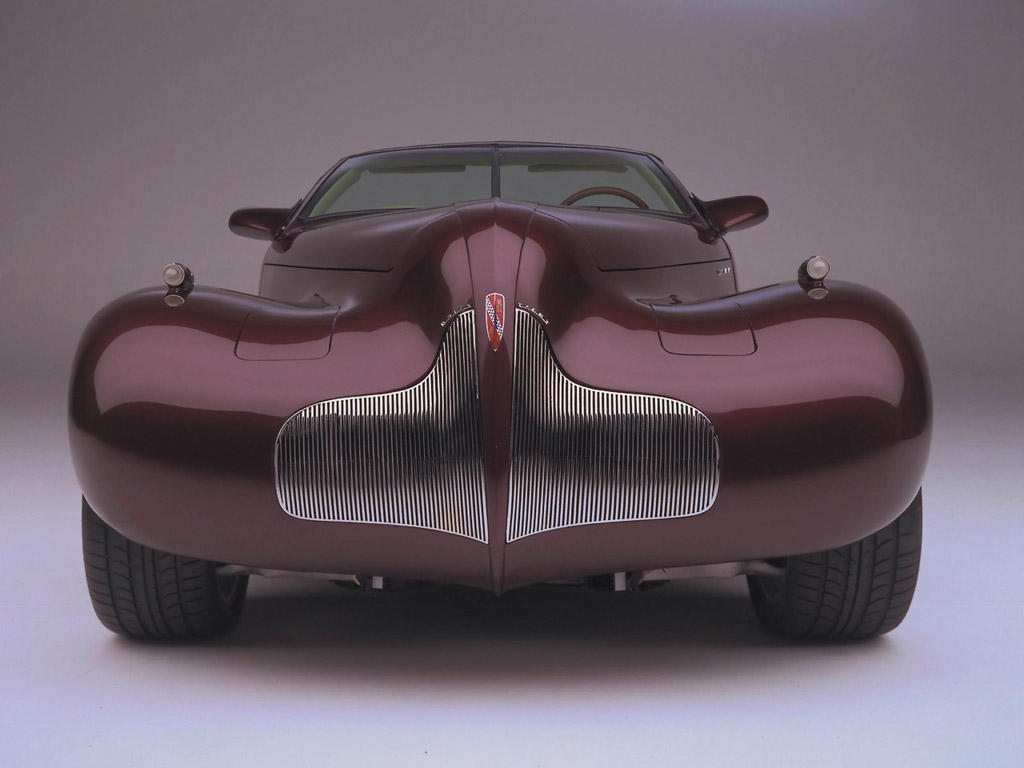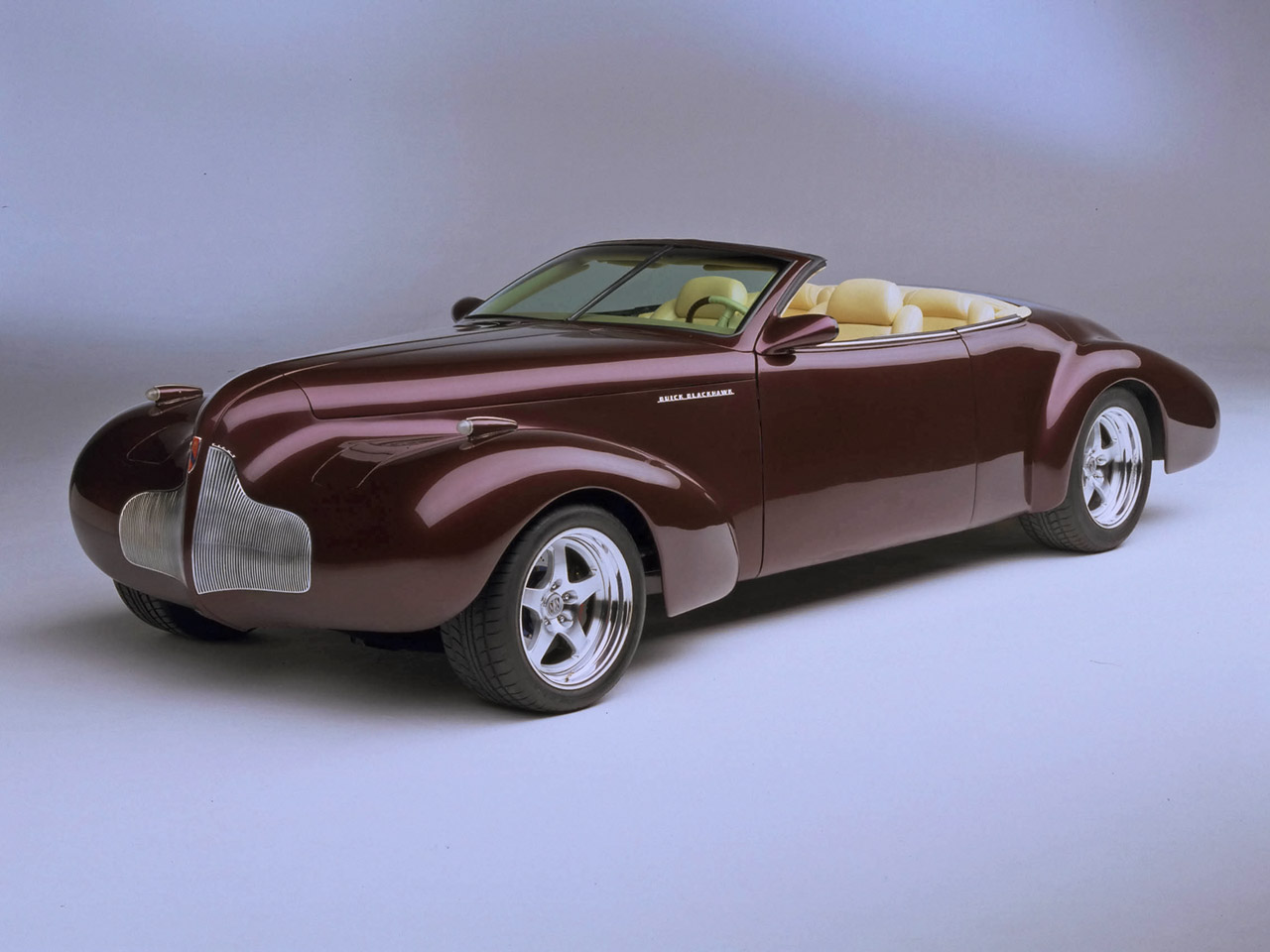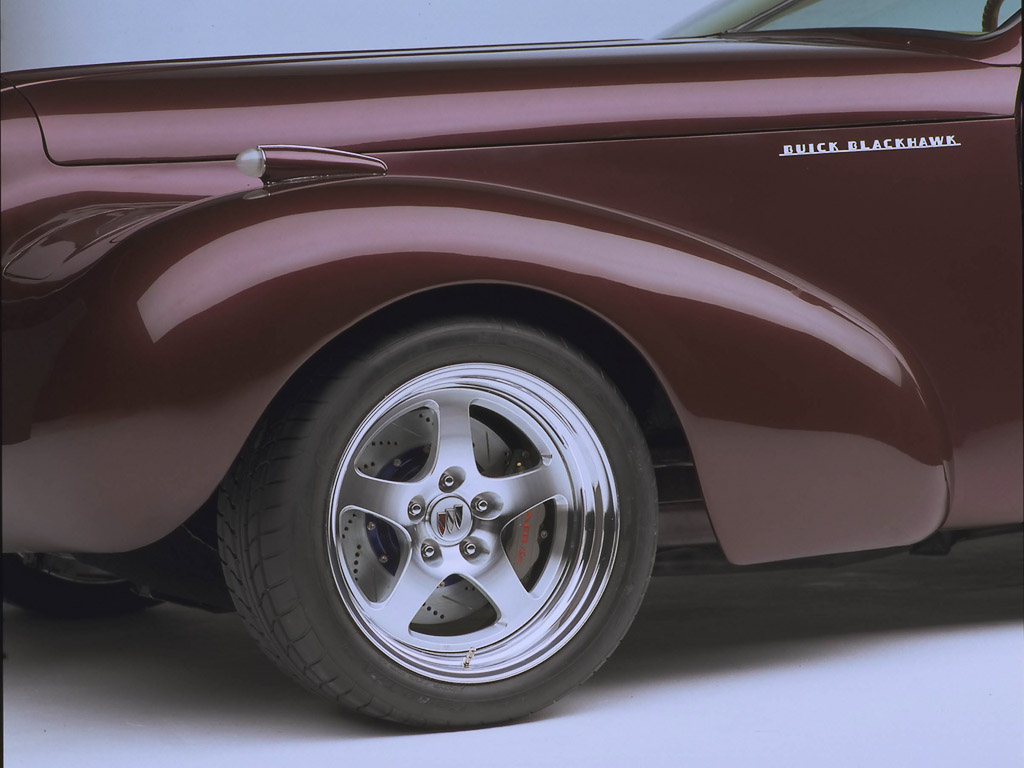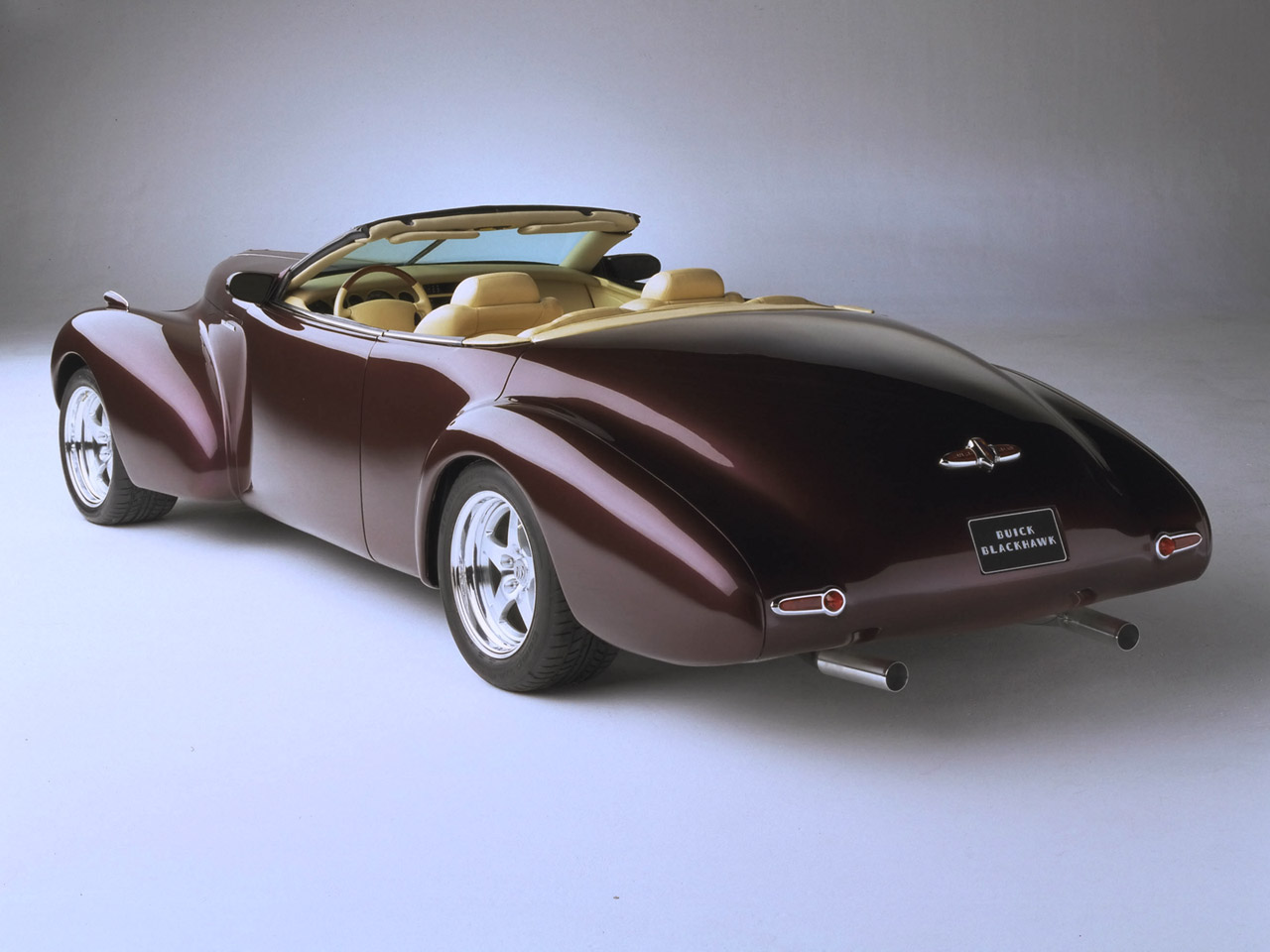2000 Buick Blackhawk Concept
Retractable convertible with styling from the ‘30s
The Blackhawk is basically a 2-plus-2
convertible with a retractable top, and a body that looks like it came
out of the late 1930s or ‘40s – because it did. Its face is a classic
1939 Buick grille, which has a pattern of fine vertical bars, and its
major sheet metal combines the sleek bodies of 1941 and 1948 Buick
Roadmasters.
All of this except the grille has been modified, and the final
appearance – featuring black cherry paint, doors without handles and
hidden headlamps – is of a streamlined yet retro head-turner that looks
like it was created specifically for the Woodward Dream Cruise.
A show car for a special audience
In a sense it was. Doble has been in
charge of creating Buick show and concept cars as well as some specialty
production models for the last 15 years. Mostly, his Buick concepts have
been built to headline major auto shows at Detroit, Los Angeles, Chicago
and New York. But the Blackhawk was created to fill a different need –
one he perceived when he attended custom and hot rod shows and caught
the enthusiasm of their crowds.
"The folks who attend those shows are very excited and knowledgeable
about cars," he said. "We felt we needed a custom Buick for that
audience, but not a hot rod. Hot rods tend to have simple bodies,
exposed engines, large rear wheels and lots of chrome. But when you
build a custom, it’s like you’re redesigning a car.
"The Blackhawk is a highly altered car, picking up design cues from
Buick’s heritage. It will be a great showpiece for a lot of events as we
head toward Buick’s centennial in 2003."
To Buick General Manager Roger W. Adams, the Blackhawk creates "a very
interesting statement for Buick to make as we approach our centennial.
Buicks have always had a strong element of power and distinctive style –
and this is a good time to remind folks of that."
He said Buick leaders have long promoted the marque’s upscale image and
such key Buick attributes as comfort, convenience, safety and security.
But in the last couple of years there has been new emphasis on more
expressive Buicks.
One example is the 1999 concept Cielo, a " no-compromise" convertible
with roof rails and retractable top. Another is the 2000 concept
LaCrosse, described as a "drop-dead gorgeous" flagship sedan, which
packages styling cues from Buick’s past (such as vertical-bar grille,
portholes and side sculpture from the ‘50s) in a refreshing way.
LaCrosse, incidentally, can also reveal a pickup-type rear cargo area on
a single voice command. Still another example is Rendezvous, a
production Buick SUV for the 2002 model year that Adams says is more
versatile than any other vehicle in its class.
The Blackhawk, while not intended for major auto shows, adds to that new
trend with a more aggressive take on styling heritage and power. And,
Doble said, the Blackhawk is "no trailer queen." It’s meant to be
driven, maybe even from custom show to custom show across the country.
Blackhawk power: 463-hp V-8; 0-60 in under 5 seconds
The Blackhawk’s performance goal is 0-60
miles per hour in under 5 seconds. Its powertrain is a 1970-vintage
455-cubic-inch Buick GS Stage III V-8 engine, heavily detailed and mated
to the latest electronically controlled four-speed automatic
transmission. The naturally aspirated, overhead valve, fuel-injected
engine generates 463 horsepower at 4600 rpm and 510 lb-ft of torque at
4200 rpm.
While Doble had the idea of creating a great Buick custom car with
heritage overtones, he did not create the Blackhawk. He took his ideas
to five companies and they came back with a number of creative concepts,
all of which were well received by Doble. Finally he chose one of four
concepts submitted by Steven D. Pasteiner, a former Buick designer who
owns a design and prototype company, Advanced Automobile Technologies,
in Rochester Hills, Mich.
Pasteiner had done major design work on a number of Buick concepts over
the years – such as Questor, Sceptre, Park Avenue Essence, Signia and
XP2000, all well-known names to students of industry dream cars. He had
also designed such production Buicks as GS models of the late 1960s and
Regals from the 1970s until he left General Motors Design to create his
own company in 1989.
Designer: "This is the ultimate Buick custom car."
Pasteiner’s enthusiasm for the Blackhawk
matches Doble’s.
"This is the ultimate Buick custom car," Pasteiner said. "We used the
1939 grille because it is one of the most significant in Buick history.
Those vertical bars are hints of the grilles that became Buick icons in
the ‘40s and early ‘50s. The grille sets the tone for the Blackhawk. But
we also liked the ‘torpedo’ body from the top-of-the-line Buicks of the
1940s."
Said Doble: "We wanted the best from Buick history, but also we wanted
to create a contemporary design. For example, the Blackhawk has a split
windshield, which is right for that era – yet the windshield glass is
curved, a more modern feature. Even the side glass is curved."
Hand-made components
Many of the Blackhawk’s major components
are hand made, such as the frame, the unique carbon-fiber top and the
retractable system that lowers the top into the trunk (leaving a small
luggage area).
Other features include a fully independent suspension, remote keyless
entry (so you can open the doors, which don’t have exterior handles) and
dual exhaust with three-inch pipes. The Blackhawk is equipped with
18-inch five-spoke alloy wheels (a style similar to those on uplevel
Rivieras, Wildcats and Skylarks of ’65) with high speed, Z-rated tires
-- P295/35R18 on the front and P295/45R18 on the rear.
As an accent complementing the exterior design, a slightly different
shade of dark cherry is used to create a "sweepspear" along the sides of
the body. The sweepspear is a decoration that first showed up on some
’49 Roadmasters and later became a shape sculpted into the sides of ‘50s
Buicks. It’s basically a horizontal line that sweeps in a downward curve
along the doors toward the base of the leading edge of the rear fender,
then kicks up over the rear wheel openings. It’s a look that reappeared
in the 1999 Cielo and 2000 LaCrosse concepts, both Doble projects.
Emphasizes industry first for Buick: Lighted turn signals



